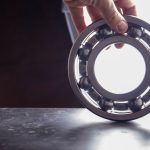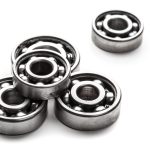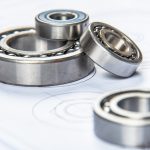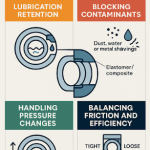Ball bearings are essential components in numerous mechanical systems, ensuring smooth operation by reducing friction between moving parts. At the heart of these bearings are the races, which play a crucial role in the bearing’s functionality and performance.
- Races in ball bearings serve as the tracks in which the balls roll, providing a smooth surface for rotation and facilitating load distribution.
- They are fundamental to the bearing’s ability to support axial and radial loads, ensuring efficient and reliable operation.
- A typical ball bearing consists of four main components: the inner race, the outer race, the balls, and the cage.
- The races are positioned concentrically, with the balls sandwiched between them.
- The inner race is attached to the rotating shaft, while the outer race is fixed to the housing, allowing the balls to roll freely in the space between them.
Types of Bearing Races
Bearing races come in various types, each serving specific functions within the ball bearing assembly:
- Inner Race: The inner race is mounted on the rotating shaft and is responsible for transferring the load from the shaft to the balls. It is typically smaller in diameter compared to the outer race.
- Outer Race: The outer race is fixed to the bearing housing or casing. It provides a surface for the balls to roll against and helps distribute the load to the housing.
Materials and Manufacturing Processes
The quality and performance of bearing races are significantly influenced by the materials used and the manufacturing processes employed.
Bearing races are commonly made from high-grade steel, such as chrome steel (AISI 52100), due to its excellent hardness, wear resistance, and fatigue strength.
In some specialized applications, other materials like stainless steel or ceramic may be used for their corrosion resistance or low weight.
Manufacturing Processes involved to produce races in Ball Bearings:
- Machining: The initial shaping of the races involves precise machining operations, including turning and milling, to achieve the desired dimensions.
- Grinding: Grinding is a critical process that ensures the surface finish and dimensional accuracy of the races. This step is vital for achieving the smooth, precise surfaces required for optimal bearing performance.
- Heat Treatment: Heat treatment processes, such as hardening and tempering, enhance the material properties of the races, increasing their hardness and durability.
- Finishing: The final finishing processes include polishing and honing to achieve a high-quality surface finish, which reduces friction and wear during operation.
Impact of Races in Bearing Performance
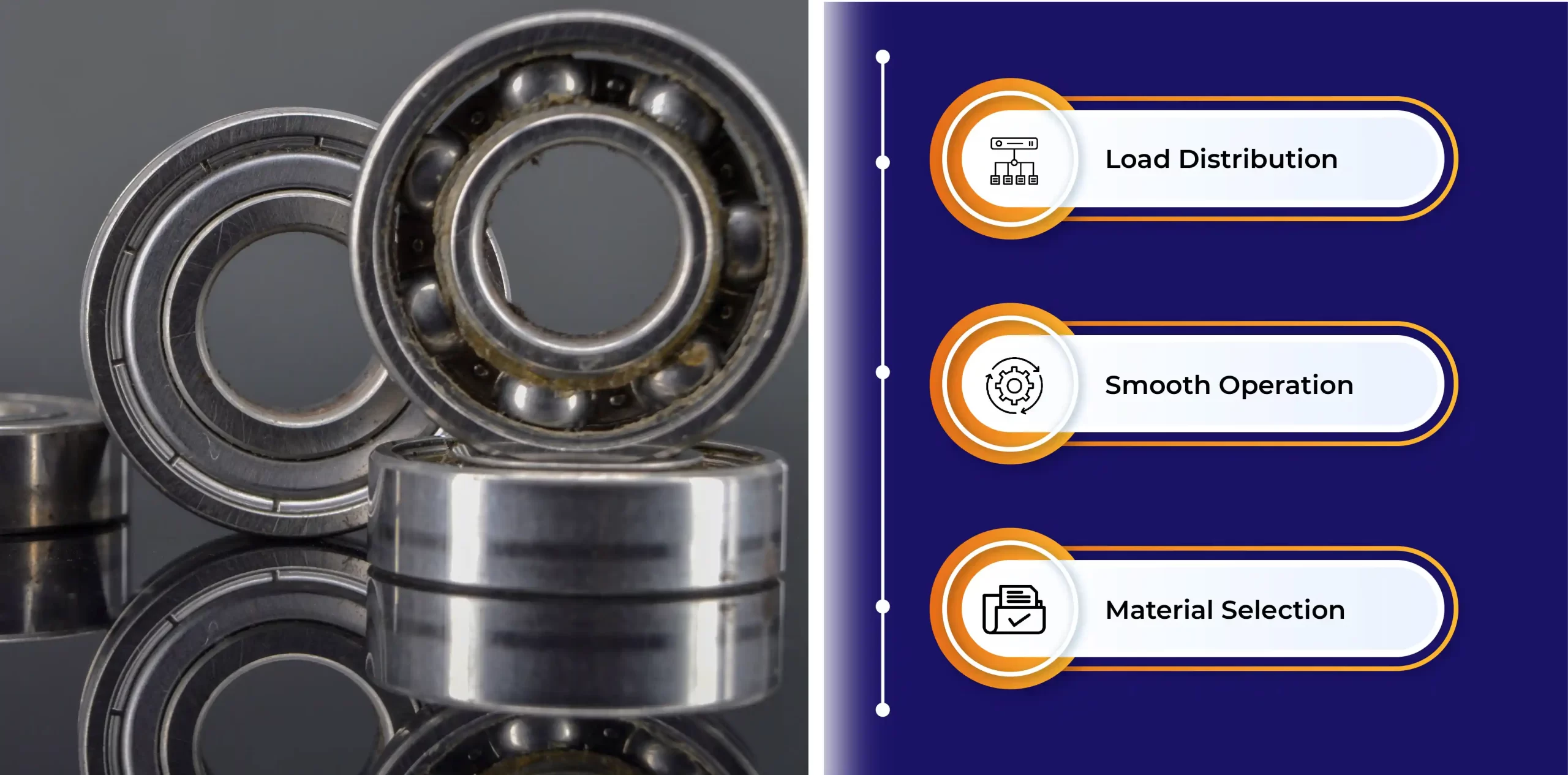
The design and quality of bearing races directly impact the overall performance of ball bearings:
- Load Distribution: Properly designed races ensure even distribution of loads across the balls, minimizing stress concentrations and extending bearing life.
- Smooth Operation: High-quality surface finishes and precise alignments reduce friction and enable smoother rotation, enhancing the efficiency of the bearing.
- Material Selection: Using the right materials for races ensures durability and resistance to wear, corrosion, and fatigue, which are essential for reliable bearing performance.
Applications and Industries
Ball bearings with various types of races are used in a wide range of industries and applications:
- Automotive: In the automotive industry, ball bearings are used in wheels, transmissions, and engine components, where they must withstand high loads and varying speeds.
- Aerospace: Aerospace applications demand bearings with exceptional precision and reliability, often operating under extreme conditions.
- Industrial Machinery: In industrial machinery, ball bearings are used in motors, gearboxes, and conveyor systems, where they provide smooth and reliable motion.
- Medical Equipment: Precision ball bearings are also crucial in medical devices, ensuring reliable performance and long life in critical applications.
Quality Control and Maintenance
Ensuring the quality and longevity of bearing races involves rigorous quality control and maintenance practices:
- Quality Control: During production, bearing races undergo strict inspection processes, including dimensional checks, surface finish assessments, and material testing. These steps ensure that the races meet the required specifications and performance standards.
- Maintenance: Regular maintenance, such as lubrication and alignment checks, is essential for extending the life of ball bearings. Proper maintenance practices help prevent issues like misalignment, overheating, and wear, ensuring the continued performance of the bearing.
Conclusion
Bearing races are fundamental components in ball bearings, playing a vital role in ensuring smooth rotation and efficient load distribution. The design, materials, and manufacturing processes of these races significantly impact the performance and durability of the bearings. By understanding the importance of bearing races and implementing rigorous quality control and maintenance practices, industries can enhance the reliability and efficiency of their mechanical systems. Whether in automotive, aerospace, industrial machinery, or medical equipment, high-quality bearing races are essential for optimal operation and longevity.
FAQ's
What are races in a bearing?
Bearing races are the inner and outer rings in which the rolling elements (balls or rollers) of a bearing move. They provide the surfaces against which the rolling elements rotate, facilitating smooth motion and load distribution.
What are ball races?
Ball races refer to the inner and outer rings of a ball bearing. These races are precisely machined to provide a smooth track for the balls to roll on, ensuring efficient operation and load handling.
How are bearing races made?
Bearing races are made through a series of manufacturing processes, including machining, grinding, heat treatment, and finishing. These steps ensure the races achieve the necessary dimensions, hardness, and surface finish for optimal bearing performance.
What is the difference between a bearing ring and a bearing race?
The terms “bearing ring” and “bearing race” are often used interchangeably. Both refer to the inner and outer rings of a bearing. However, “bearing ring” is a more general term, while “bearing race” specifically emphasizes the role of these components in providing a track for the rolling elements.
How are ball bearing races made?
Ball bearing races are made through precise machining to achieve the desired shape and dimensions. They are then ground to ensure a high-quality surface finish. Heat treatment processes are applied to enhance their hardness and durability, followed by final finishing steps to achieve the required surface quality.
What is a ball race made of?
Ball races are typically made of high-grade steel, such as chrome steel (AISI 52100), due to its excellent properties, including hardness, wear resistance, and fatigue strength. In some specialized applications, materials like stainless steel or ceramic may be used for their specific benefits.
How do you measure bearing races?
Bearing races are measured using precision instruments like micrometers, calipers, and coordinate measuring machines (CMMs). These tools ensure that the races meet the required dimensional tolerances and surface finish specifications, which are critical for the bearing’s performance.

